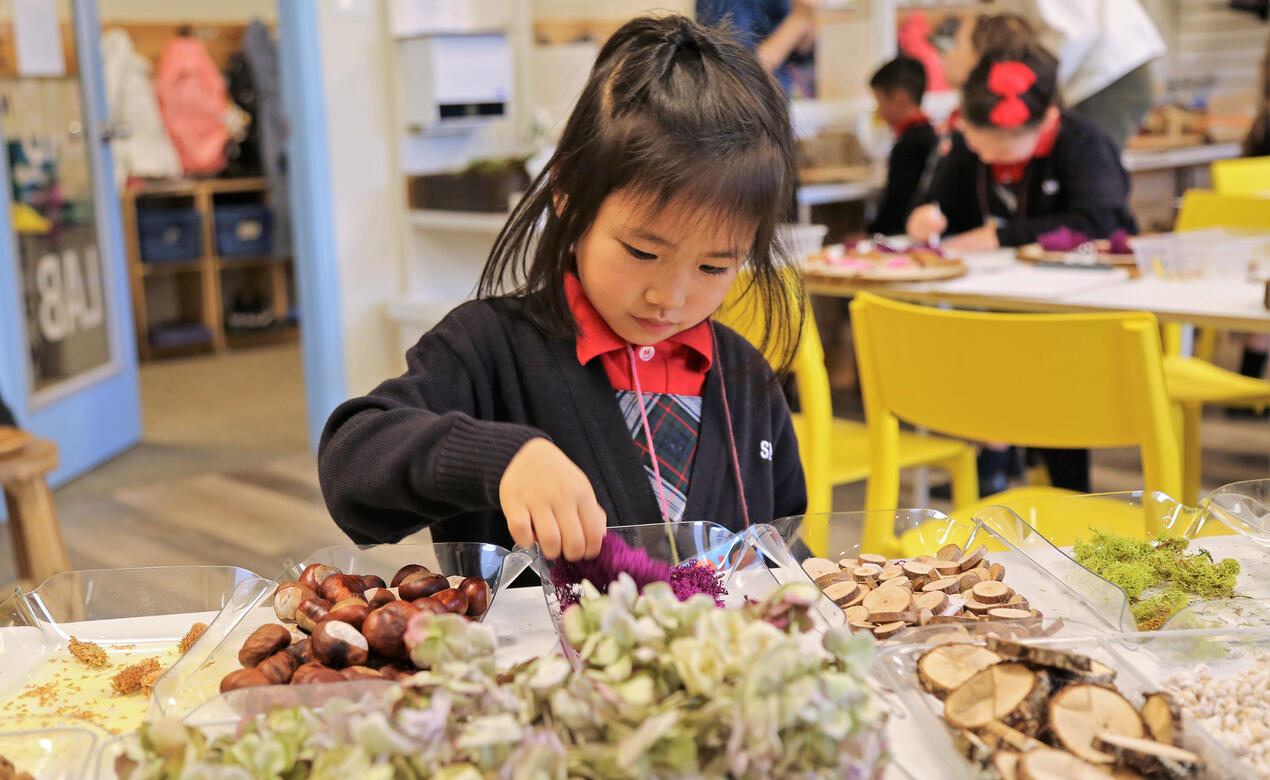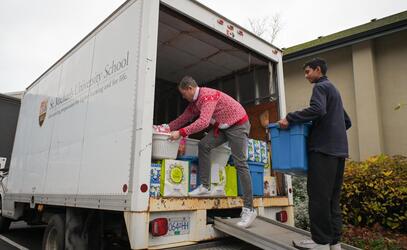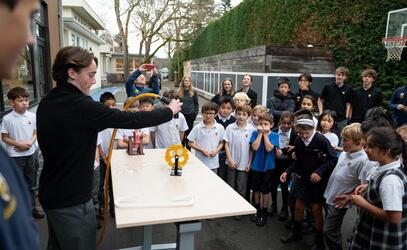
The Junior School Imagination Lab plays an important role in the lives of SMUS students by providing them with opportunities to approach and solve problems through tinkering and experimentation in a supportive environment that values learning from mistakes. During this past year our focus on ‘habits of mind’ paired with STEAM (science, technology, engineering, arts and mathematics) concepts has taken on an even more important role.
In the Imagination Lab during ADST (Applied Design, Skills, and Technologies) classes, we focus on one positive character trait each month to develop our Portrait of a Learner traits: curiosity, balance, collaboration, initiative, empathy, resilience and integrity. These qualities are explored through design challenges, experiments, tinkering, and engineering activities.
Take a Walk in Someone Else's Shoes
Recently the Grade 2 classes explored the concept of empathy inspired by Dr. Bonnie Henry’s love of interesting shoes. Students were introduced to the saying, “Take a walk in someone else’s shoes,” and spent time discussing how this phrase related to the concept of empathy. The complex notion of empathy was broken down into the following ‘I statements’ to which students could relate:
- I try to understand how others may feel
- I am helpful
- My words and actions are kind
- I make a difference
The students were then partnered up and given the following design challenge: How might we practise empathy by asking questions and listening intently to each other in order to design and build a shoe perfectly suited to our partner? The shoe must also fit!
The Grade 2s started the design thinking process by interviewing their partner to find out about their likes and dislikes, and the type of shoe that would best suit their lifestyle. Empathizing with their partner provided an opportunity for students to set aside their own opinions and gain an appreciation of their ‘user’ and their needs. I could hear students sharing important insights such as:
“My favourite colour is green and I like laces because I move around quickly and I need my shoes to stay on.”
“I am very sporty so I like shoes that are comfortable with a good grip.”
“I like to dress up in fancy clothes so I would like to have a high heel.”
From Consultation to Design
Once the interview results were carefully analyzed, the brainstorming process began. Partners consulted with each other at every iteration, and once a design had been approved, students began the prototyping process. Partners took turns tracing each other's feet, identifying the various components of footwear, and carefully choosing materials suited for their partner.
The iLab was a flurry of gluing, cutting, measuring and designing. Skills in planning, estimating, visualizing, decision making and critical thinking naturally evolved as fittings revealed necessary tweaks and improvements. After multiple iterations, each student created a one-of-a-kind shoe that fit their partner perfectly (in most cases), with a few Cinderella-esque moments! The variety of styles, colours, materials and designs was a testament to how carefully students had listened to each other.
These budding designers created a fabulous array of shoes – shoes with heels, wheels, laces, unicorn horns, stars, and sparkly jewels. Bonnie Henry and John Fluevog would be proud!
As a concluding activity, students wrote a letter to their partner explaining how they had designed ‘a perfect shoe for you’ and carefully wrapped the shoes to give as a gift – a powerful way for students to practise the design thinking process while focusing on the quality of empathy. The shoes themselves were feats of engineering, and the process of practising and building kindness with their classmates was equally as important. In the end, the smiles on the faces of the students, who all felt listened to and appreciated, were as bright as the sparkly jewels on their new shoes!


